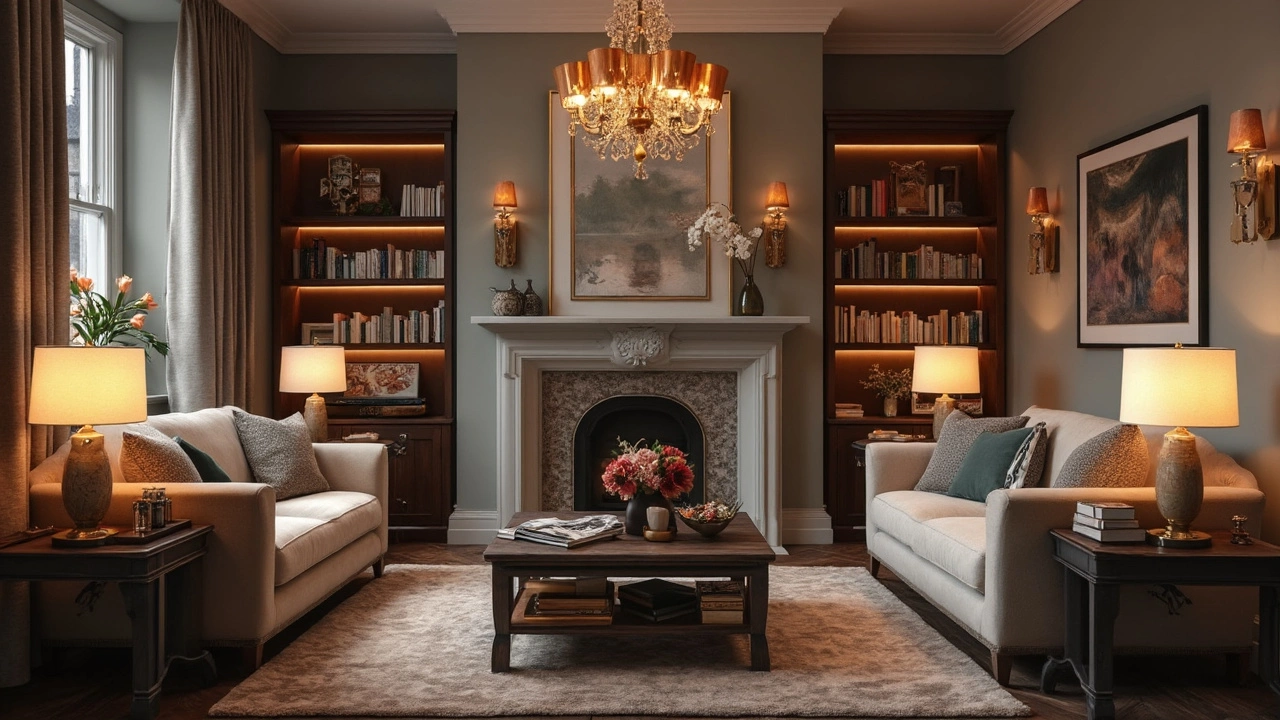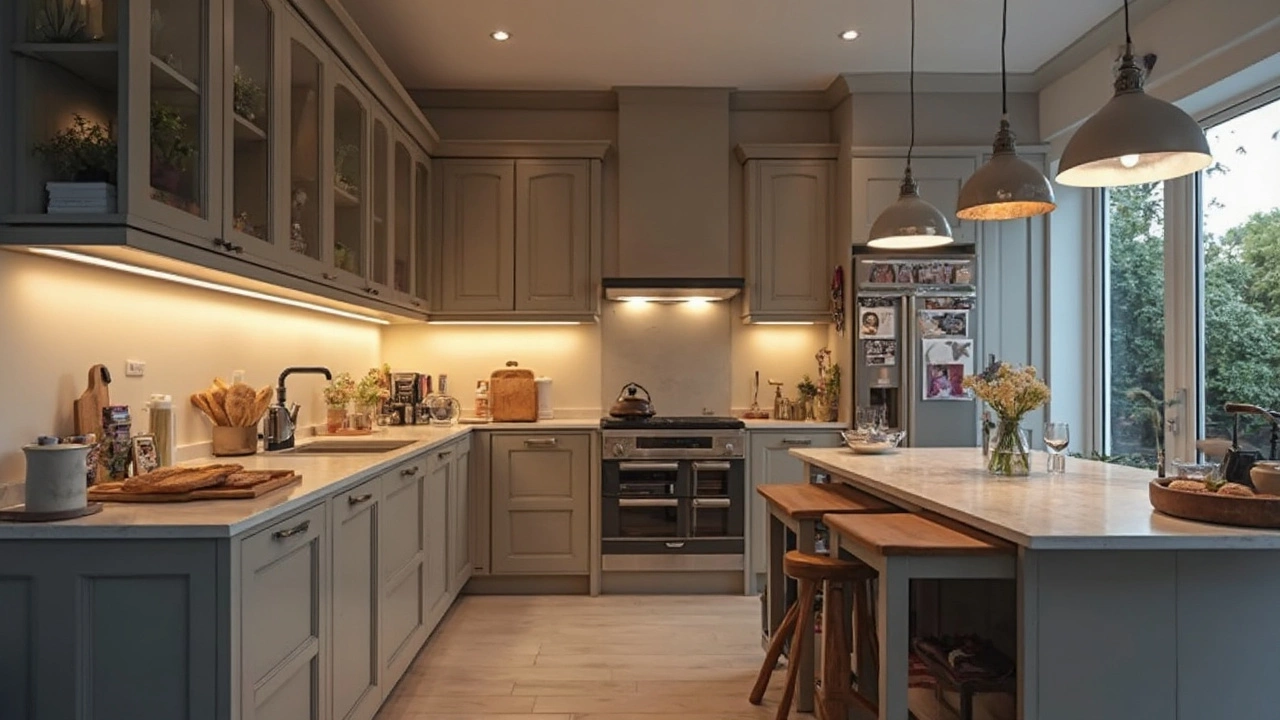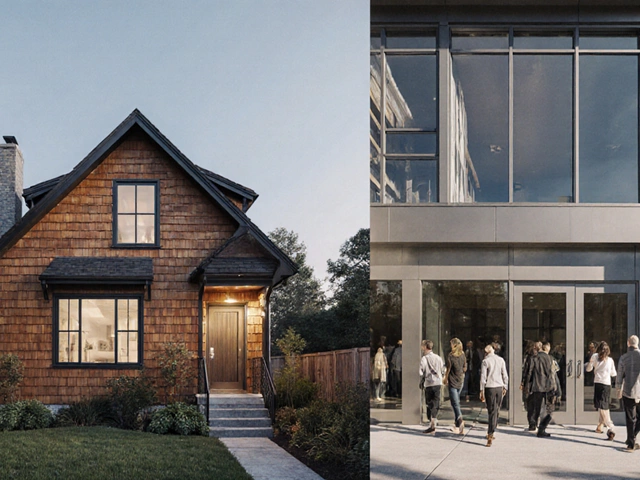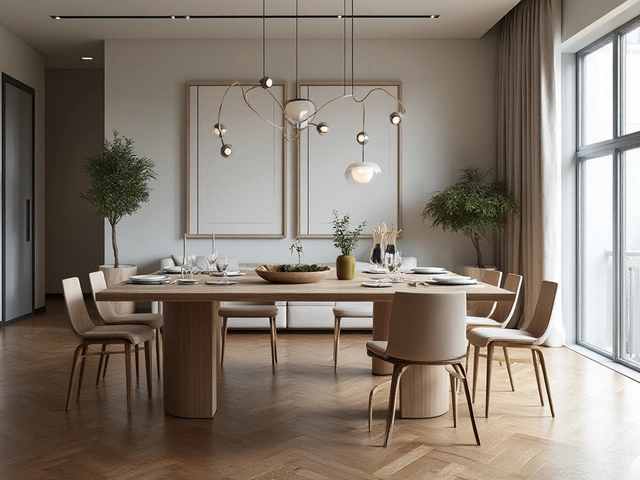
If you’ve ever walked into a friend’s house and thought, “Why does this place just feel right?”—chances are, they got their lighting right. Light changes everything. It can make a tiny kitchen feel huge or turn a cold living room into the spot everyone wants to hang out in.
Most people stick to one overhead fixture and hope for the best. That almost never cuts it. Great home lighting is all about mixing it up. Think layers—ceiling lights, lamps, under-cabinet strips, and maybe even a few LED tricks. You want control, too. Trust me, a dimmer switch is a cheap game-changer when you want to shift the mood or just chill out.
Start thinking about the rooms in your house. What do you actually do there? Reading, cooking, Zoom calls, binge-watching? The answer should change your lighting approach every time. Kitchens need bright, focused light that makes cooking safer and less of an eye strain. Living rooms look their best with a mix of soft lamps and maybe a bold pendant or two for style. Bedrooms? Keep it cozy, keep it soft—you want something that’ll help you wind down, not feel like you’re at the dentist.
- Types of Home Lighting and Why They Matter
- Room-by-Room Tips for the Perfect Setup
- LEDs, Bulbs, and Color Temperatures Explained
- Common Lighting Mistakes and How to Avoid Them
Types of Home Lighting and Why They Matter
If you want to master home lighting, start by knowing the three main types: ambient, task, and accent. Each type has a specific job to do, and skipping one almost always leaves a room looking off.
Ambient lighting is your main source of light. Think of it as the base layer. Overhead ceiling fixtures, recessed cans, and even the sunlight that pours through windows all fit here. Good ambient lighting helps you walk around without bumping into stuff but shouldn’t make a room feel like a hospital.
Task lighting is all about focus. This is the must-have for places you read, work, or prep food. Desk lamps, under-cabinet lights, and reading sconces fit the bill. The goal is to cut down on eye strain and give your space the right brightness where you actually need it.
Accent lighting is the fun one. It’s meant to draw attention to something—art, bookshelves, or even some cool architectural feature. Spotlights and wall washers are common choices. Accent lighting is what gives a room some style and keeps it from looking flat.
- Ambient: Overhead fixtures, big wall lights, large-scale lamps.
- Task: Desk lamps, under-cabinet strips, bathroom vanity lighting.
- Accent: Spotlights on artwork, LED strips on shelves, small table lamps.
Here’s something folks don’t always realize: combining all three gets the best best lighting for your home. According to a 2024 survey by the American Lighting Association, 68% of homeowners said mixing these layers made rooms feel more welcoming and actually improved their mood. So if you want your home to work for you—comfort, looks, and even productivity—don’t stick to just one type of light.
Room-by-Room Tips for the Perfect Setup
Nailing the best lighting for each room is all about asking, “What do I actually do in here?” Different spaces need different setups. Let’s break it down.
Kitchen: You want it bright and clear, but harsh light everywhere gets old fast. Mix overhead ceiling lights (like flush-mount LEDs) with focused task lighting over counters and the stove. Under-cabinet strips are game changers—they kill shadows while you chop veggies, and they’re super easy to install. Bulbs in the 3000–4000K range give a clean, natural look; too warm and everything goes yellow, too cool and it feels like a waiting room.
Living Room: This is where you want your home lighting to feel relaxed but flexible. Overhead fixtures are fine, but they aren’t the MVPs here. Grab two to three table or floor lamps with soft, warm bulbs (2700K is the sweet spot) and put each one on a separate switch if you can. Got a reading corner? Use a focused lamp with a slightly brighter LED bulb. Want movie night vibes? Add a dimmer to the main light.
Dining Room: A statement fixture over the table (like a pendant or chandelier) draws everyone in. Hang it about 30–34 inches above the table so you’re not blinded during dinner. Consider a fixture with a dimmer so you can crank it up for homework but dial it down for date night. Go with bulbs labeled “warm white.”
Bedroom: Here, soft ambient lighting is your best friend. Put lamps on both sides of the bed for late-night reading—pick a bulb that’s not too blue (under 3000K). Recessed ceiling lights or cove lighting work well if you want general brightness, but keep them on dimmers. Skip harsh overheads if you can. Closet? Add a simple LED puck light or motion-sensing strip.
Bathroom: You don’t want to shave or do makeup in shadows. Mount vanity lights on either side of the mirror so your face is evenly lit. Ceiling lights or waterproof recessed LEDs are good for general “I need to see where I’m going” light. Bulbs in the 3500–4000K range show color the way it actually looks.
Here’s a quick look at which color temperatures fit where:
| Room | Recommended Color Temp (Kelvin) |
|---|---|
| Kitchen | 3000-4000K |
| Living Room | 2700-3000K |
| Dining Room | 2700-3000K |
| Bedroom | 2700-3000K |
| Bathroom | 3500-4000K |
Every space is a little different, but sticking to these simple rules gives you a killer shot at getting your house lighting feeling just right—no design degree needed.

LEDs, Bulbs, and Color Temperatures Explained
Shopping for home lighting has gotten a lot more interesting—and confusing—since LEDs took over the scene. Those old-school incandescent bulbs? They barely last a year, burn a ton of energy, and get hot. Halogen? Better, but still not the top choice. LED bulbs pretty much check all the boxes now: they use up to 80% less power, can last over 15 years, and stay cool even after hours of use. No wonder they've become the top pick for most folks looking for the best lighting for a house.
But not all LEDs are equal. You’ll see numbers like 2700K or 5000K on the box—that’s Kelvins, and it tells you about the "color temperature." It makes a legit difference. A 2700K bulb puts out warm, cozy light (think soft sunset). Boost it to 4000K, and you’re getting a crisp, neutral white. Want something that feels like bright daylight? Go for 5000K or higher. Picking the right color temperature can totally change how a room looks and feels.
Check this quick table if you want to compare:
| Color Temp (Kelvin) | Light Look | Where It Works |
|---|---|---|
| 2700-3000K | Warm White | Bedrooms, Living Rooms |
| 3500-4100K | Cool White | Kitchens, Bathrooms, Offices |
| 5000-6500K | Daylight | Garages, Workshops, Laundry Rooms |
There's more to think about: brightness is measured in lumens now, not watts. A 60-watt incandescent? That’s about 800 lumens in the LED world. Check the lumens first; higher is brighter, no matter what the package says about "equivalency." If you want lighting fixtures that look modern and help you save on your electric bill, stick with LEDs. They come in tons of shapes: traditional bulbs, downlights, strips—even color-changing ones controlled with your phone.
One more thing—pay attention to the Color Rendering Index (CRI). Good LEDs have a CRI of 80 or above, making colors look natural. Cheap bulbs with low CRI can make your favorite paint color or dinner look, well, weird. So always check the specs, not just the price tag.
- Pick 2700K-3000K for a cozy vibe at home.
- Go higher (4000K+) for tasks or rooms where you need to see everything clearly.
- Stick with name-brand LEDs with high CRI for the best results.
Common Lighting Mistakes and How to Avoid Them
You’d be surprised how many people mess up their home lighting without even knowing it. Certain mistakes crop up over and over, and fixing them can make a bigger difference than buying fancier furniture.
First off, relying on a single overhead fixture in every room is probably the #1 misstep. Big ceiling lights blast the whole space but leave corners gloomy and make everything look way too harsh. Don't just settle for that one "main" light; mix in table lamps, floor lamps, or wall sconces to spread the light around. Layering is the secret sauce for great house lighting.
Another classic mess-up is choosing the wrong color temperature. That’s the "warmth" or "coolness" you get from different bulbs. Buy cool white lights (over 4000K) for your bedroom, and you’ll end up with a vibe closer to a big-box store than a relaxing space. Bedrooms need warm, soft light. Save the cooler, brighter stuff for the kitchen or bathroom where you actually need to see what’s going on.
People often forget about dimmers, too. It sounds simple, but being able to adjust your lights changes the whole feel of a room. Installing a basic dimmer switch costs less than dinner out, and suddenly every lighting fixture in your house just became ten times more versatile.
Then there’s picking fixtures that are just too small or too big for a room. That tiny ceiling light in a giant living room looks out of place and can’t get the job done. There are rough guidelines for this stuff. For example, in dining rooms, aim for a fixture that’s one-half to two-thirds the width of the table. Otherwise, the scale feels off, and the light isn’t even spread right.
- Don’t forget about shadows. Positioning your lights wrong—like putting a vanity light only above the mirror—creates shadows that aren’t flattering. Flank a bathroom mirror with two vertical lights on either side for way better results.
- Watch the wattage. Too much can make your space way too bright and uncomfortable. Not enough, and you can barely see your own feet. Aim for about 20 lumens per square foot in living rooms and 50 in kitchens.
One stat worth mentioning: According to the Department of Energy, switching to all-LED bulbs in a home can cut lighting energy use by up to 75%. That’s not just about the bill—it usually means fewer mistakes since modern LEDs come in every color temperature and brightness level you might need.
Bottom line? Think about how you actually use each space. Layer your lights, get the color right, pick fixtures that actually fit, and don’t skip the lighting tips pros use, like dimmers and proper bulb types. No big mystery—just a little attention to detail.




